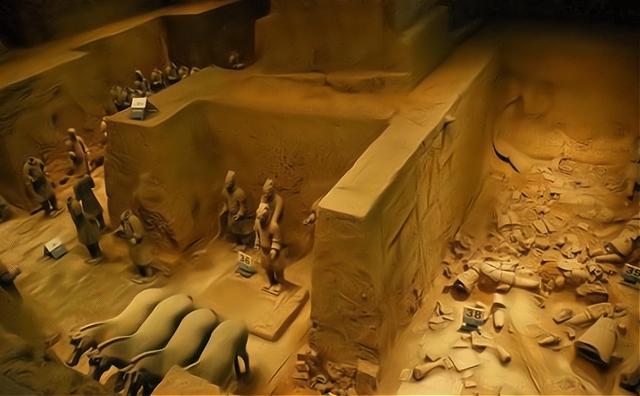
What Happened to the Qin Dynasty Tombs After the Fall of the Dynasty?
Expert-Verified Answer
After the fall of the Qin dynasty, the tomb of the first emperor, Qin Shi Huang, was largely left untouched but gradually fell into disrepair. However, other imperial tombs and numerous elite and commoner cemeteries were looted in the immediate aftermath of the Qin collapse.
The Fate of Qin Shi Huang's Mausoleum
Contrary to popular belief, there is no historical evidence suggesting that Qin Shi Huang's mausoleum was extensively looted following the dynasty's collapse. Several factors contributed to its preservation:
- Massive Scale and Hidden Entrances: The sheer size of the complex, spanning over 50 square kilometers, and the secrecy surrounding its construction made it difficult to locate and penetrate the main tomb chamber.
- Legends and Superstitions: Rumors about elaborate traps and curses deterred many would-be grave robbers. These tales, recounted through centuries, likely held some weight, preventing large-scale looting attempts.
- Gradual Decline: While the main tomb remained intact, the mausoleum complex itself suffered from neglect. Structures on the surface deteriorated over time due to natural elements and lack of maintenance.
The Looting of Other Tombs
While Qin Shi Huang's tomb escaped major looting, the same cannot be said for other imperial tombs and burial sites:
- Xiang Yu's Revenge: Historical accounts describe Xiang Yu, a key figure in the rebellion against the Qin, as the perpetrator of significant damage to the Qin imperial tombs. Driven by vengeance against the Qin dynasty, he is said to have looted and vandalized several tombs.
- Civil Unrest and Opportunistic Looting: The collapse of the Qin dynasty ushered in a period of instability and warfare. During such turbulent times, tombs, often seen as repositories of wealth, became targets for opportunistic looting by various groups and individuals.
Archaeological Evidence
Archaeological excavations conducted throughout the 20th and 21st centuries have provided valuable insights into the state of the Qin tombs:
- Qin Shi Huang's Tomb: Despite some evidence of minor disturbances, the central tomb of Qin Shi Huang remains sealed and unexplored. The presence of mercury, detected in high concentrations in the soil, further supports the accounts describing a lavishly preserved burial chamber.
- Looted Tombs: Excavations of other Qin tombs, including those of nobles and officials, often reveal signs of looting. The absence of valuable artifacts and evidence of forced entry corroborate historical accounts.
Q&A
1. Why wasn't Qin Shi Huang's tomb looted after the fall of the Qin dynasty?
Qin Shi Huang's tomb was likely spared due to its massive scale, hidden entrances, deterrent legends, and the gradual decline of the complex over time.
2. What evidence is there that other Qin tombs were looted?
Historical records attribute looting to Xiang Yu's forces, and archaeological excavations reveal signs of forced entry and the absence of valuable artifacts in many Qin-era tombs.
3. What is the current state of Qin Shi Huang's tomb?
The main tomb of Qin Shi Huang remains sealed and unexplored, with archaeological efforts primarily focused on the surrounding mausoleum complex.
note: This return of all, without the author's permission, may not be reproduced